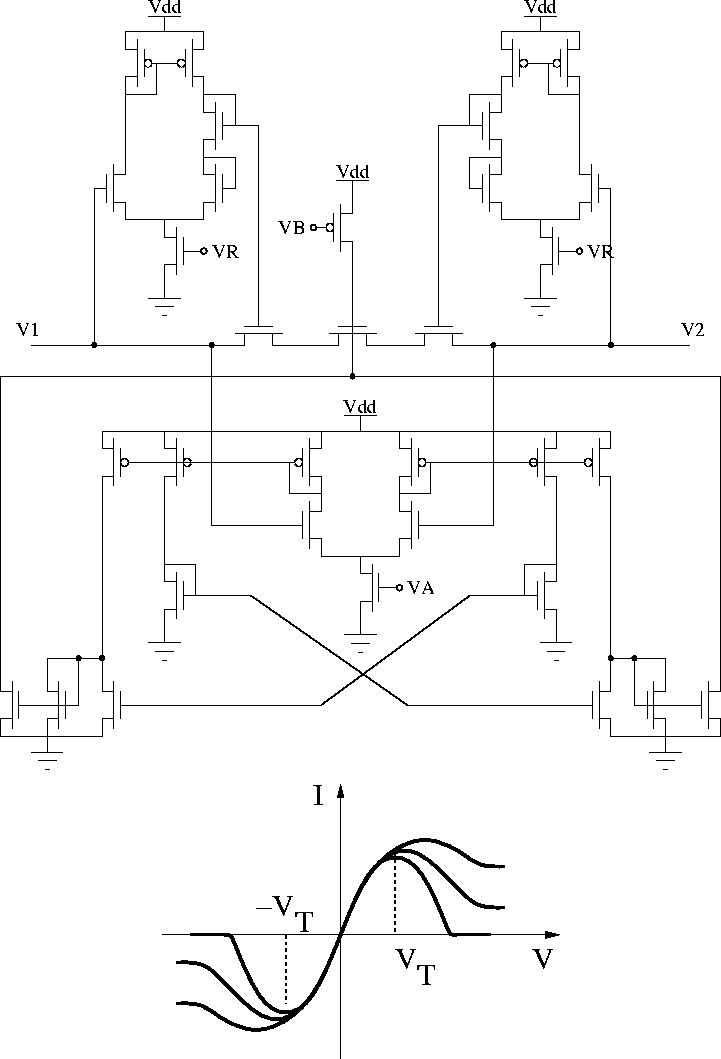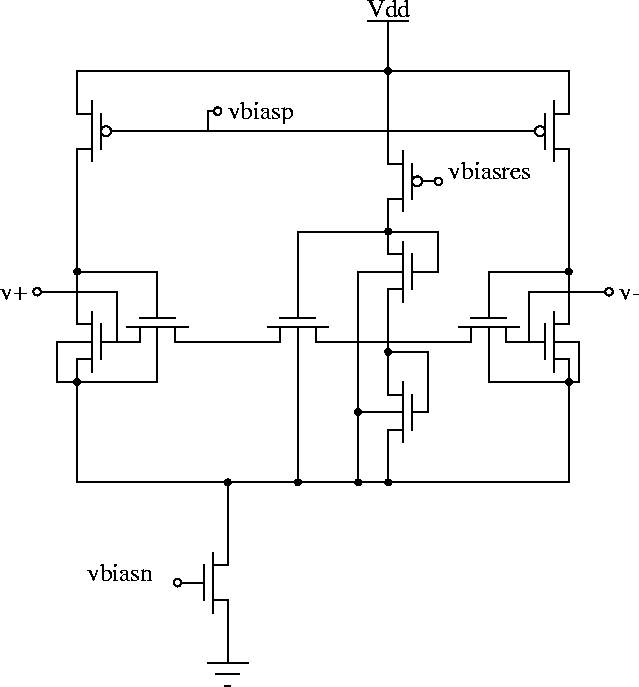In [Harris et al. 90, Harris 91, Harris et al. 89] the concept of resistive fuses and a vision chip based on the resistive fuse idea are described. Resistive fuses are two-port nonlinear elements in which the I-V relationship is linear for small values of the voltage across the element, and the current falls as the voltage increases. If this element is used in resistive smoothing networks instead of the linear resistors, for small differences between the inputs, the network performs a smoothing operation. But for abrupt spatial changes and large differences, the resistor is virtually turned off. Believing that large differences only occur at places where discontinuities exist, the resistive fuse network is capable of segmenting regions separated by abrupt intensity changes, and smoothes other regions with less variation. It should be noticed that due to the introduction of a nonlinear element with a negative I-V region, the network can have several local minima and may not converge to the global solution. A simple treatment is to change the biasing of the fuse in such a way to start from the original linear resistor and gradually vary the bias to end up in the global minimum.
The circuit and I-V characteristics of the fuse are shown in
Figure 2.18. The slope of the I-V curve in the linear
region, and the threshold value at which the curve starts falling down
are determined by the bias voltages ![]() ,
, ![]() , and
, and ![]() . It can
be easily seen that the upper portion of the circuit is the same as
the horizontal resistor described in [Mead 89b].
. It can
be easily seen that the upper portion of the circuit is the same as
the horizontal resistor described in [Mead 89b].
A similar concept has been followed in [Yu et al. 92]. A new circuit introduced in [Yu et al. 92] is shown in Figure 2.19. Compared with the previous circuit it uses fewer transistors, but the linear range of the resistor is small and uncontrollable which makes it unattractive. The transition from linear to cut-off region is also sharper in this circuit.
Harris et al. have designed and fabricated a 20 ![]() 20 array of
this fuse network and illustrate promising results from some simple
tests.
20 array of
this fuse network and illustrate promising results from some simple
tests.

Figure 2.18: a) Harris et al.'s resistive fuse circuit. b) the I-V
characteristics of the fuse.

Figure 2.19: Yu et al.'s resistive fuse circuit.